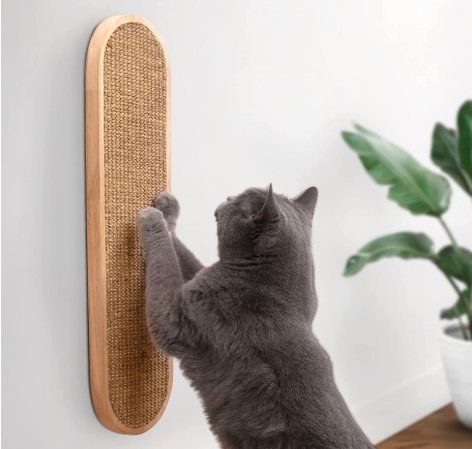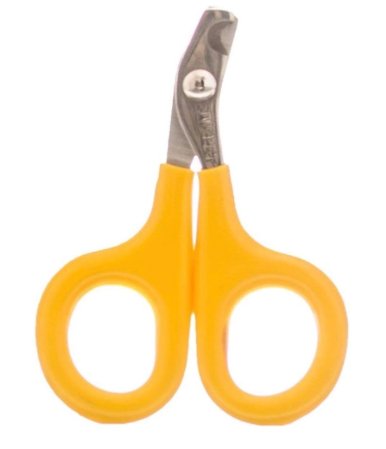We may earn revenue from the products available on this page and participate in affiliate programs.
At some point, your beloved velvet sofa (or vintage Eames or custom-upholstered ottoman) will become scarred with scratches from your even more beloved feline friend. It’s inevitable. Or is it? We embarked on a mission to find out how to prevent the seemingly inescapable situation when it comes to cat ownership, and there are, in fact, ways to do so. We tapped Sarah Wooten, a doctor of veterinary medicine, to learn why felines feel the need to tear up our stuff to begin with, and then we called in two of our favorite design-loving cat moms—Elena Lohse of This House 5000 and Mallory Fletchall of Reserve Home—for their tried-and-true tricks to keep the claws away from their favorite pieces.
Why Do Cats Scratch Furniture?
Think of it as feline self-care. “Scratching benefits these animals on a mental, emotional, and physical level,” says Wooten. It feels good to stretch their spine and the tendons in their paws during the process, plus it helps keep their nails from overgrowing.
That said, just as some people prefer yoga to meditation, some of these creatures may like the texture of leather, while others are all about fabric upholstery. The same goes for scratching on vertical versus horizontal surfaces.
A Word on Declawing Cats
While once a common solution to the ever-present scratching issue, declawing cats is now a no-no, according to the ASPCA and most veterinarians. In 2019, New York became the first state to completely ban declawing, and other cities and states are following suit. “Declawing is an incredibly painful surgery,” Wooten explains. The term declawing isn’t even accurate—the process actually amputates the tips of a cat’s fingers. “It can be severe enough to change a sweet kitty into an angry, aggressive one,” she notes.
If that isn’t reason enough, declawing can cause long-term pain and even more behavioral issues after the surgery including biting, urinating around the house, and overgrooming.
The Best Strategies for Keeping Cats From Scratching Furniture
Trim Their Nails
Fletchall consistently trims her three cats’ nails to keep them from digging too deep into her sectional. You can brave it yourself—the Humane Society of the United States recommends doing so every few weeks with specially made scissors or even your own clippers, as long as they’re sharp—or have it done at the vet. Fletchall’s method? Wait until your kitty is sleepy. “Even if you can only get a few nails done at a time, it’s more than worth it,” she says. “Trimmed claws inflict less damage.”
Train Them Early
Lohse, the proud parent of a Scottish Fold and a Scottish Straight, emphasizes the importance of laying down the law as soon as you bring your new baby home. “If you get a kitten, start scratch training immediately,” she says. Lohse had a scratching post ready and physically showed her cats how to use it. “I literally put their paws on it,” she says, laughing. A finely sisal woven option like this can blend right into your space, and when your cat uses it, reward it with a small treat so it gets used to the positive association.
Invest in Multiple Scratching Posts
It may take a couple of tries to find the post your pet prefers. Wooten recommends testing vertical and horizontal options. Once you’ve narrowed it down, buy a few and place them around the furniture you want to protect. Fletchall has one behind her sofa as well as one on each side of it. “The key is to make sure your cats have someplace to scratch when they feel the urge and are near your precious furniture,” she says. To lure them in, Wooten advises putting a small amount of catnip on the post.
Keep a Squirt Bottle Handy
Every time your cat tries their luck, give them a little spritz of water. “Cats are smart; they will catch on,” says Lohse. A gentle spray reminds them who’s boss (you!).
If All Else Fails, Try the Tape Trick
Apply either clear packing tape or one specifically designed for this purpose, such as Clawguard shields, over the area your scratcher gravitates to. As Fletchall explains, “Cats are not fans of the feeling beneath their claws and tend to stop altogether once they learn to expect the tape.” Then you can sit back, relax, and enjoy that still-smooth velvet.
Scratch-Preventing Products to Shop
For Posting
Whether you have a rug ripper or a curtain crawler, this sisal post will lure scratchers away from any surface—it arrives ready to wall mount but also comes with grippy rubber feet for the floor.
For Trimming
We can’t guarantee it will be easy, but if you’re brave enough to tackle the trimming yourself, the cushy grip and sunny shade of these cat nail clippers might make the process a tad more cheerful.
For Taping
If you simply can’t keep kitty away from the furniture, these clear protective sheets are a good small-scale solution. Available in different sizes to shield targeted areas like sofa arms, they won’t feel like the plastic that covers the couch at Grandma’s house.




